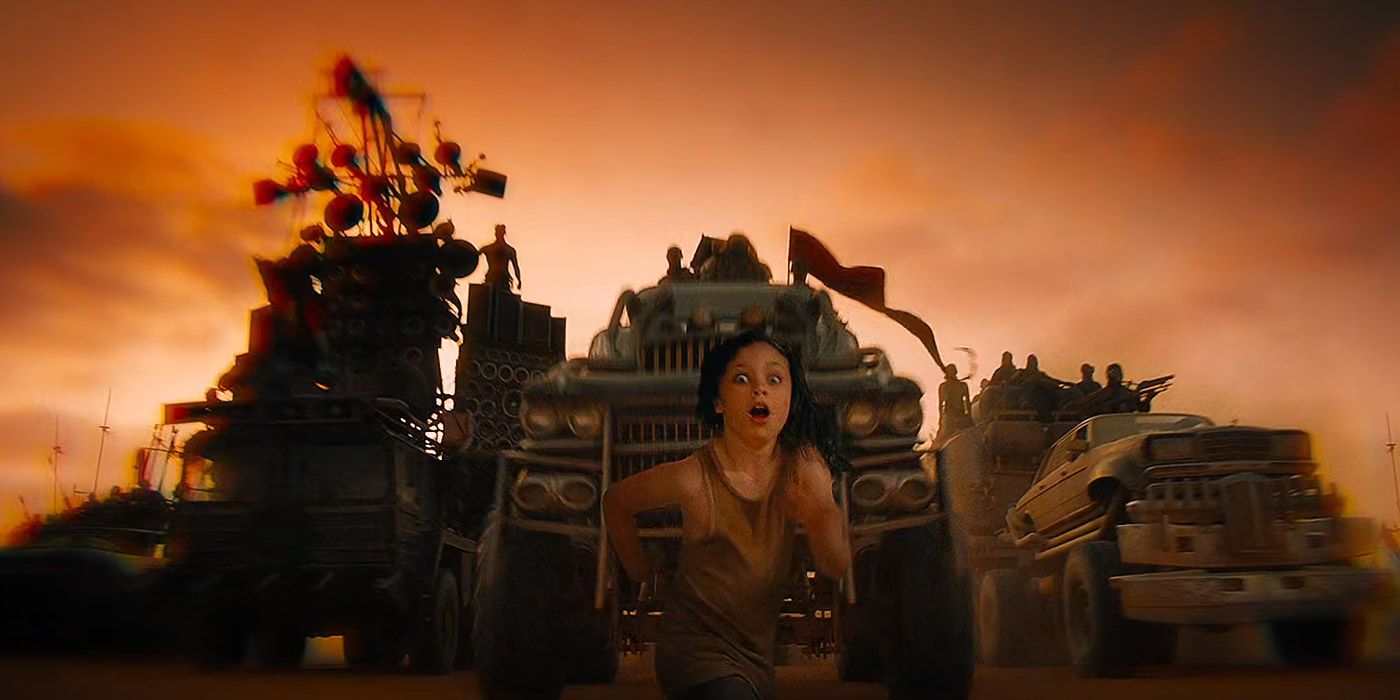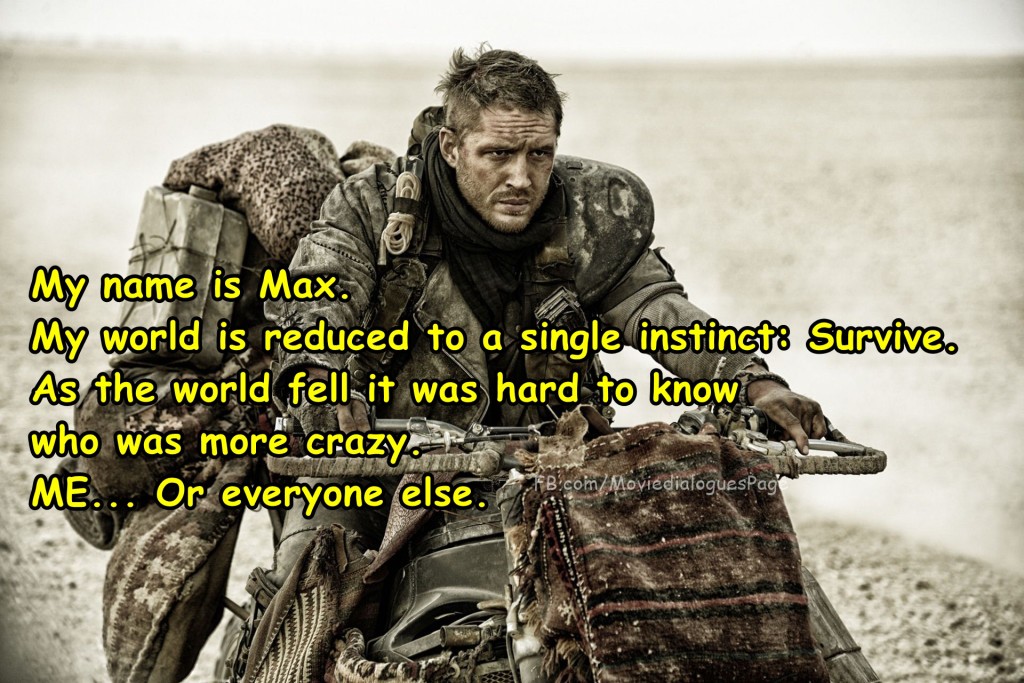
If Mad Max: Fury Road is merely a tale being told by an unreliable narrator, then could Max himself be "The First History Man"? If so, he"s somewhat like Game of Thrones" Samwell Tarly a character who survives a dangerous world and then goes on to write about it.
#MAD MAX FURY ROAD QUOTE HOW TO#
See more: How To Restart On Clash Of Clans ? How To Restart Clash Of Clans
#MAD MAX FURY ROAD QUOTE MOVIE#
As for Miller"s quote, it could be applied to a different movie character like John Wick, an archetypal figure who understands his place in the world but struggles to find peace. And so Max walks away at the conclusion of Mad Max: Fury Road per archetype rules, just like lovers come together at the end of romantic comedies. In a way, Max is a cinematic descendant of Clint Eastwood"s Man with No Name, the antihero of Sergio Leone Blood Money trilogy ( Fistful of Dollars, For a Few Dollars More, The Good, the Bad and the Ugly). Interestingly enough, Mad Max 2 is told from the perspective of a kid who recalls his experiences with Max Rockatansky. ""When you read Joseph Campbell, you realize what he is: He’s a character who predates cinema and is almost in all folklore, the wanderer in the wasteland searching for meaning."īased on the archetype concept, the opening moments of Mad Max: Fury Road can be interpreted as Max himself telling an imagined story. As Miller stated in 2015 (via USA Today), the Mad Max character is structurally rooted in Joseph Campbell"s Hero"s Journey, and so the "First History Man" correlates with the archetypal premise: For Mad Max: Fury Road, Miller conjured up the "Where must we go" line to reinforce the central themes of the franchise that were originally established with Mad Max, a film about a reluctant hero. Miller"s First History Man is actually a reference to the Mad Max comic series and a character who was originally supposed to be part of the 2015 film"s storyline. The final quote in Mad Max: Fury Road doesn"t cite a real historical scholar or a famous text but rather the director himself. Related: Mad Max: Furiosa"s Origins & Backstory Before Fury Road Explained In the tradition of reluctant heroes, Max walks away from The Citadel after sharing a knowing glance with Furiosa. The warriors track down Immortan Joe, defeat him, and subsequently save a starving and thirsty community that needs a leader to believe in. In a twist of fate, Max and Furiosa encounter each other well beyond the military"s headquarters, The Citadel, and end up joining forces.

The same applies to Imperator Furiosa (Charlize Theron), a rogue lieutenant who betrays her military leader, Immortan Joe (Hugh Keays-Byrne), by taking his five wives and hitting the road. Based on the character"s look and surrounding environment, it"s clear that he has seen much better days.

Mad Max: Fury Road retains the style and spirit of Miller"s trilogy starring Mel Gibson, but it"s not necessarily a faithful continuation. Tom Hardy stars as the title character, a man who begins the film by telling the audience that he"s haunted by the past and just may be a little bit "crazy." This version of Max drives the same vehicle from the original films, a Special Pursuit, and also wears his Main Force Patrol jacket.

we who wander this Wasteland in search of our better selves." George Miller"s 2015 action classic ends with a line of cryptic text attributed to The First History Man, which states "Where must we go. What"s the true meaning of the ending quote in Mad Max: Fury Road? After Tom Hardy"s Max Rockatansky helps a group of fellow road warriors overthrow a military leader, the franchise character once again wanders off by himself to live a life of solitude. WARNING: Spoilers for Mad Max: Fury Road. You are watching: Where must we go we who wander this wasteland quote Mad Max: What Fury Road's Ending Quote Really Means What"s the true meaning of the ending quote in Mad Max: Fury Road? We break down "The First History Man," character archetypes, and Mad Max mythology.


 0 kommentar(er)
0 kommentar(er)
